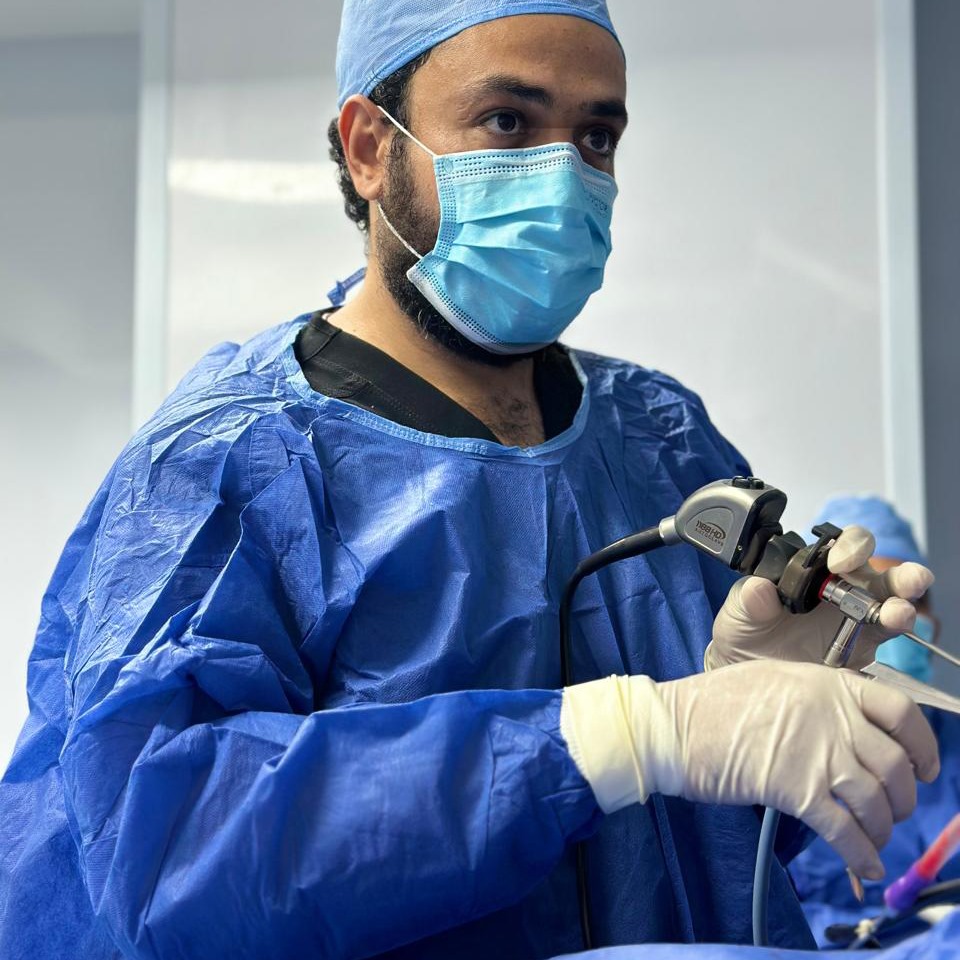Nasal and Sinus Endoscopes

What is a Nasal Endoscope?
When do you need a sinus endoscopy?
Dr. Mohamed Al-Qadi uses a sinus endoscope to examine and evaluate the condition of the nasal airway and its lining, thanks to the endoscope's magnification capability, as it has a camera and a light source at its tip. Some patient complaints require an examination using the endoscope, and among the most common of these complaints are:
• Nasal congestion.
• Nasal obstruction.
• Nasal infections.
• Sinus infections.
• Nasal tumors.
• Unexplained nosebleeds.
• Impaired or complete loss of smell.
• Cerebrospinal fluid leakage.
Nasal endoscopy is a safe and simple procedure that can be performed in the doctor's office. It can reveal important details about the presence of tumors or swellings in the nose, identify the cause of bleeding, and allow for tissue samples to be taken for microscopic examination if their nature is in question.
Nasal endoscopy can also be used as a treatment suggestion in the following situations:
• For children, for example, Dr. Mohamed El-Qady can remove foreign objects from inside the nose.
• Treating nasal tumors without the need for major surgical intervention.
• Removing nasal polyps to help the patient breathe better.
• Treating chronic sinusitis.
Dr. Mohamed El-Qady, the best ENT specialist, may use nasal endoscopy to monitor the progress of other treatments, such as tracking the response of nasal polyps to medication.
Sinus infections and inflammation are among the most common uses of nasal endoscopy, especially if the patient begins to complain of:
• Nasal congestion.
• Yellow or greenish discharge from the nose.
• Facial pain.
Dr. Mohamed El-Qady may use nasal endoscopy to determine the cause of the blockage, take a sample of pus-filled cells for examination, and select the most appropriate treatment.
Nasal endoscopy is also used to evaluate conditions such as:
• Nosebleeds.
• Partial or total loss of smell.
What are the steps of a nasal endoscopy procedure?
The nasal endoscopy procedure involves:
• The endoscope itself.
• A strong, high-quality light source.
• A suction device for nasal secretions.
• Tools to take tissue samples from the sinuses, such as nasal forceps.
• Dr. Mohamed El-Qady may instruct you to stop taking certain medications, such as blood thinners, depending on your health condition and in coordination with your treating physician.
• There are no restrictions on eating or drinking before the nasal endoscopy unless your doctor advises otherwise.
• Dr. Mohamed El-Qady will apply a decongestant nasal spray to reduce nasal swelling, allowing the endoscope tube to pass smoothly through the nose and sinuses.
• Dr. Mohamed El-Qady may also use a local anesthetic spray, which will temporarily numb the nose to minimize discomfort during the procedure.
• The patient sits upright on the examination chair, with the head adjusted to help Dr. Mohamed El-Qady get a better view.
• Dr. Mohamed El-Qady administers the anesthetic through the nose.
• Dr. Mohamed El-Qady inserts the flexible endoscope tube through one nostril to examine that side.
• Dr. Mohamed El-Qady may need to adjust the angle of the endoscope multiple times (up to three times) to examine larger areas of the nose and sinuses.
• Dr. Mohamed El-Qady then inserts the endoscope into the other nostril for examination.
• Dr. Mohamed El-Qady may need to take a tissue sample, which is completely painless.
• The nasal endoscopy usually goes smoothly, and the patient can return home immediately afterward.
• Dr. Mohamed El-Qady discusses the results with the patient to determine the appropriate treatment or may recommend further tests, such as a CT scan, to confirm the diagnosis.
In conclusion, sinus endoscopy is a simple yet important diagnostic method, so do not hesitate to undergo it if your doctor recommends it.